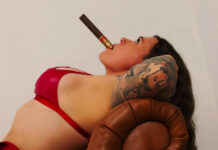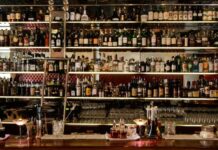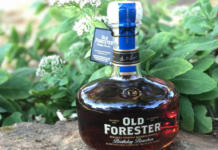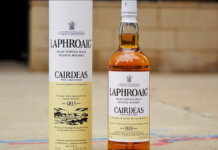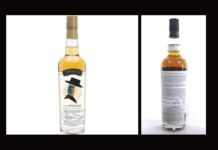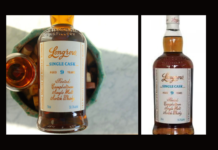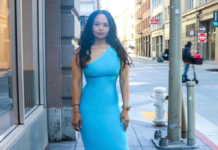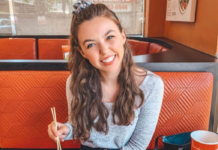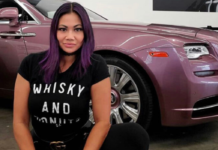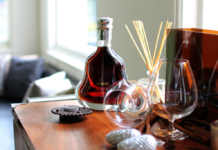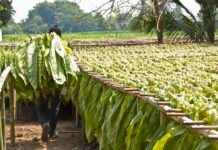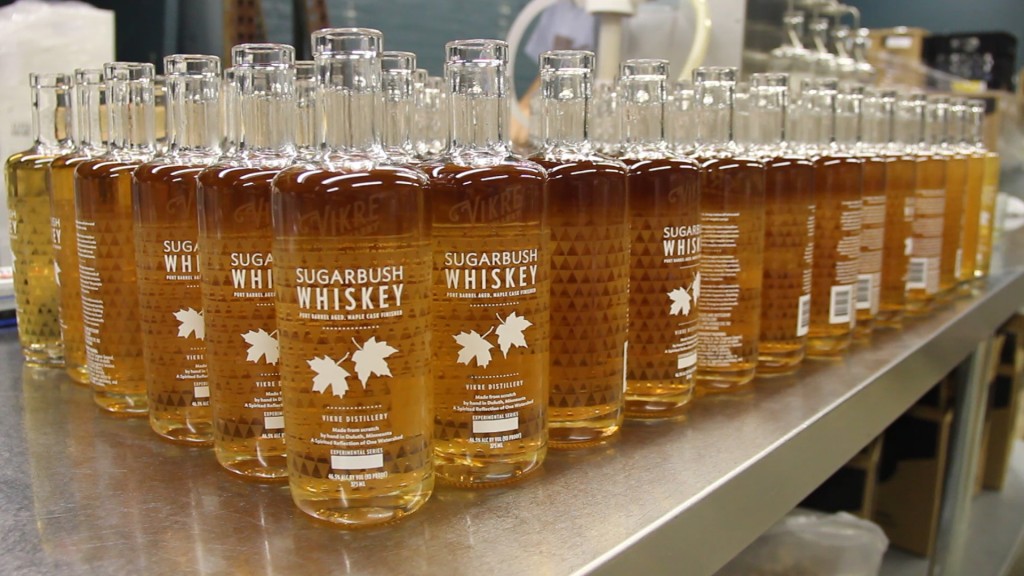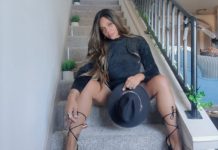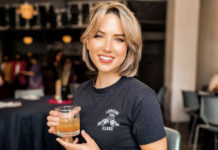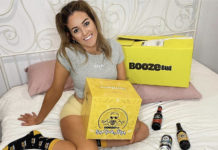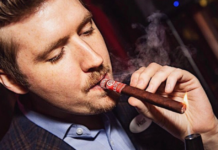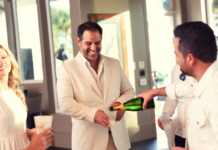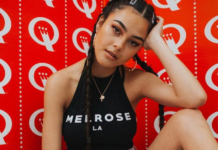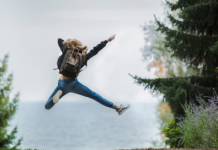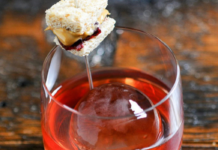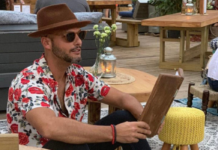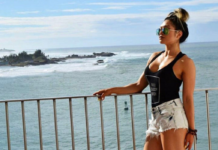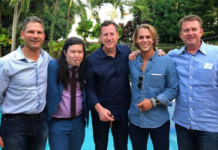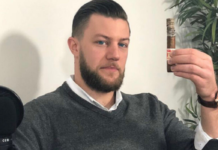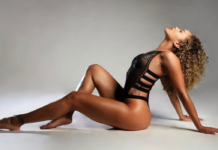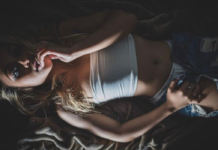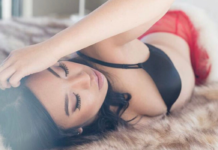We never planned to become distillers. But one frigid January night, Lake Superior, vast, majestic, mysterious, called us with a bidding we could not refuse. “Come,” she whispered to us. And we knew we would.
The nature and culture of Northern Minnesota are our inspiration and terroir. The pristine beauty of Lake Superior, the North Woods and the Boundary Waters are distilled in the flavor of everything we make. It’s difficult to imagine a more perfect place for making distilled spirits. We craft spirits that thoughtfully blend tradition and innovation. We forage the Northwoods for wild botanicals; whenever possible we use local grains, handcrafted Minnesota oak barrels, and the clean, cold water of Lake Superior. Distilling the essence of this great watershed into the finest spirits possible is our passion. Doing so purely and creatively, using traditional methods, is our vocation. We spoke to Emily Vikre, the co-founder, president and arbiter of taste for the distillery.
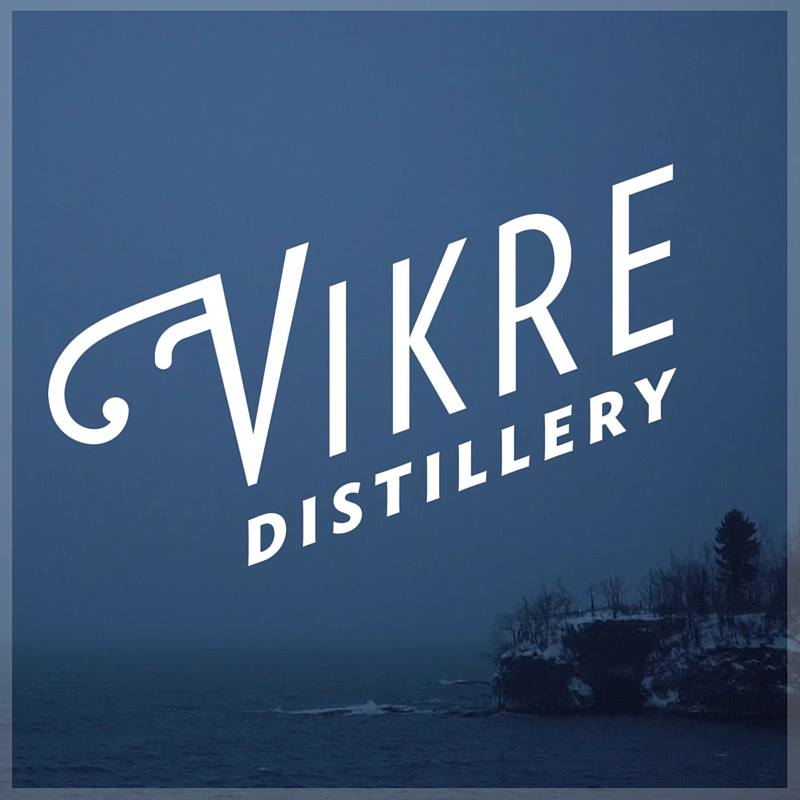 Emily, explain a little about your background and how and when you came to have an interest in spirit distilling?
Emily, explain a little about your background and how and when you came to have an interest in spirit distilling?
EV: My background is actually in nutrition, public health, and food writing/recipe development (and my husband’s – who co-owns the distillery with me – is in global health). I have a PhD in Food Policy and Applied Nutrition, and before we decided to start a distillery I was ensconced in the world of academia. I didn’t have any interest in distilled spirits before we suddenly decided we were going to start a distillery, but I had a strong background in wine.
That’s where my drinking passion was, and I had done some studying of wine, just for fun, in France and Boston. Then we were struck by the idea to move back home to Duluth and start a distillery, and I figured I’d better start learning about them. And through studying, and sipping, I’ve developed a real love for the fascinating histories of different distilled spirits, their remarkable depth, nuance and creativity. Weird herbal liqueurs made by monks are probably my very favorite. And I also have gotten really into cocktail history and understanding ratios, etc.
I came at cocktails like I think about cooking, but it’s different because you’re working with ingredients that are already so complex. They can do unexpected things when you combine them.
What was your vision for Vikre Distilling? Tell us about the name.
EV: Vikre is my husband’s and my last name. Joel’s last name was originally Wickre, an Americanized version of the Norwegian last name Vikre. When we got married we decided to change it back to the Norwegian spelling and both change our name to that (I’m a Norwegian-American dual citizen, so in this way it sort of celebrated both of our families).
The name Vikre Distillery reflects our shared story and passion, and it means people of the bay in Norwegian, making it perfectly fitting for the distillery, which sits overlooking the bay of Lake Superior.
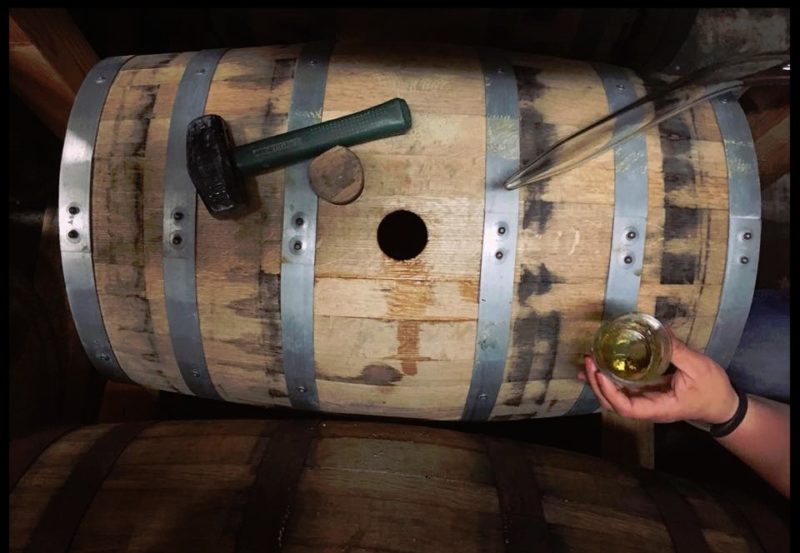 What have been the main challenges involved in setting up a new distillery? And what has been the part you’ve enjoyed most?
What have been the main challenges involved in setting up a new distillery? And what has been the part you’ve enjoyed most?
EV: Well, there’s been an awful lot to learn. We didn’t know anything about anything when we started, and we’ve been teaching it all to ourselves. We also didn’t know you could hire consultants to do things like develop your spirit flavor profiles for you, or develop your brand for you, or manage distributor relations for. We’ve just figured it all out ourselves, which is also the fun part, but it’s more than a little exhausting always to be right on your growing edge. I think one of the biggest challenges –and I’m sure this is what all small distilleries face – is simply being small in a playing field dominated by very large companies with massive funding.
People in the liquor world are used to receiving constant freebies, rewards, money, trips, etc. to convince them to pick up a particular product. They’re also used to lower prices that small distiller’s simply can’t match because it costs so much more to make spirits on a small scale. What I enjoy most is doing creative things every day, and also the people we work with. The team of people we’ve hired is just the most remarkable, talented fun group of people and I love them all dearly.
What exactly does your job entail?
EV: The fanciful name for my job is “arbiter of taste.” I get to be basically where the buck stops on what Vikre tastes like, looks like, and sounds like. So I develop new product flavor profiles, I oversee our brand and storytelling, and our values, which is at the core of everything we do.
Because Joel and I both come from more social and environmental justice backgrounds, we’ve carried those values into our business, even though the alcohol industry may seem like an odd place for them! We are a triple bottom line business, which means we consider people, planet, and profit equally in thinking about our bottom line, and staying true to that is really important to me in my job.
What spirits do you currently produce. Which of them are whiskey?
EV: We currently produce three different expressions of gin, all inspired by the Northwoods of MN – we call them Juniper, Spruce, and Cedar.
We produce two aquavits, one that is un-aged and one that is aged.
We make a vodka.
And we currently have two different whiskies that we’ve released – though still in quite limited quantities. One is called Sugarbush, and it’s distilled from a bourbon mash, but then it’s aged in used port barrels with Maplewood staves added for part of the aging, and then it’s finished in used bourbon barrels that we’ve also used to hold local maple syrup. And we make a whiskey called Northern Courage, which is a rye malt whiskey that includes some cherrywood smoked malt and some peat smoked malt, just a titch, and is aged in new oak.
We’re releasing a single malt called Iron Range American Single Malt in March, as well, which has been aged in a mix of used cooperage including used bourbon barrels and white port barrels.
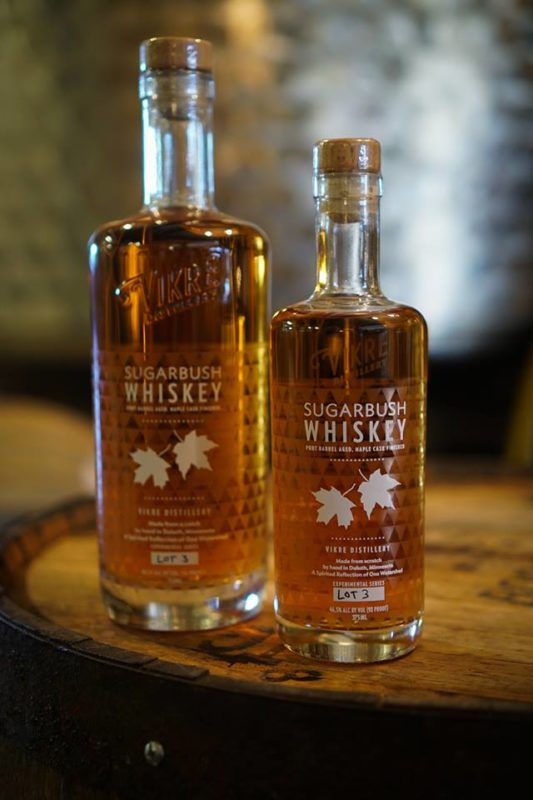 Where or who do you feel is the driving, innovative force behind our craft distilling industry right now?
Where or who do you feel is the driving, innovative force behind our craft distilling industry right now?
EV: Ooh, that’s an interesting question. I really think innovation is coming from all over the place. I couldn’t pinpoint a specific person or place. It’s coming from barrel makers and distillers and the big guys and the little guys and all across the country and even the world. One of the most interesting sounding gins I’ve heard about in a long time is made in Australia, for example.
Your favorite thing about going into the distillery each day?
EV: The people I get to work with.
Is there a flavor profile that you aim to achieve when malting, mashing, fermenting, distilling and maturing?
EV: It varies hugely depending on what we’re making. Flavor profiles and ideas pop into my head like little wispy dreams, and then we chase them. Usually the inspiration comes from the sights and sounds in the forests around here, and they’re also often influenced by wine.
Why did you start production? Did you see a gap in the market or was it to fulfill some passion?
EV: Now that we have a distillery up and running, we’ve sat down to ponder this very question. In spite of a lot of ruminating, we can’t pinpoint exactly why we decided to start a distillery. It was like the idea flashed in front of us and we instantly knew we were going to do it. The best explanation that we’ve been able to come to is that Lake Superior literally called us to do it. Because the whole process has felt like a calling, where we weren’t really the ones deciding yes or no about it. The Lake wanted us to come home to distill her essence into spirits, and we just did her bidding. So, I guess the “fulfill some passion” option?
What – in your opinion – makes the spirits produced at your distillery unique?
EV: A lot of people are saying this now about their spirits, but I think our terroir is an important contributor to what makes our spirits unique. Each particular terroir that someone works in gives uniqueness to what they’re doing. And I’m partial to our terroir, of course, but I really do think it has the potential to give rise to some of the world’s great spirits. We have 10% of the world’s fresh water in Lake Superior and it’s so clean and mineral-free scientists call it glacially distilled.
 Can you tell us a bit about the distillery, stills, warehousing, casks, etc.
Can you tell us a bit about the distillery, stills, warehousing, casks, etc.
EV: Sure! We are in an approximately 4,000 square-foot space in the Canal Park area of Duluth, which is the business district area right on Lake Superior. The building we’re in is called the Paulucci building because it was owned by Geno Paulucci, the man responsible for bringing pizza rolls to the world. Our tasting room/bar is in a space that was Geno’s private garage, and then the distilling space is where there once was a Chinese food canning line.
We have a mill room just outside the back of the distiller where grain gets milled and then augured up through a hole in the wall to get dumped into our mash cooker. We have six 1,000 gallon fermenters and we have two stills. One is a 1,000 gallon pot still that’s stainless on the bottom and copper in the little top column, and the other is a 250 gallon copper still with a reflux column, a gin basket and an attached vodka column. And they’re all plumbed together with an elaborate Dr. Seussian set of copper piping – Joel did all the plumbing himself.
We mainly use the big still for whiskey and the little still for clear spirits. Down the hall is a room filled with racks (that we built ourselves!) that warehouses the whiskey we make now. The warehouse has room for about 1,000 barrels. We’ve been busier making gin than we projected so we haven’t made anywhere near as much whiskey as we originally intended, but we’ve upped our distilling capacity, so we’re hoping to fill our barrel storage up this year and then we’ll have to start looking for more storage space – maybe in the creepy basement of the building, which is cavernous!
Do you believe now is the most exciting time for a whiskey lover?
EV: I think anytime you have a great whiskey in front of you is the most exciting tie for a whiskey lover!
Do you have any role models in this industry?
EV: I think my greatest role models are places that having been making fantastic spirits for years and years, like some of the great distilleries in Scotland, or the distillery where they make Chartreuse. I know all those distilleries are now owned by giant parent companies, but I still admire what’s happening at the distilleries very much.
We had Chartreuse before. It’s definitely an acquired taste. What are your hopes for the distillery 5 years from now? What do you want to be known for?
EV: The two things in the world that I really care about are making beautiful things and being kind. So I want us to be known for making spirits that are truly beautiful, and for being deeply thoughtful and caring towards the earth and people. My hope is to be realizing our vision of making some of the world’s greatest spirits, reflecting this unique landscape. And we want to do it in a way that really pushes the envelope on sustainability as well as giving back to our community and also contributing to a respectful culture around drinking alcohol.
For more information on the distillery, please visit the links below:
website: VikreDistillery
facebook: @VikreFacebook

